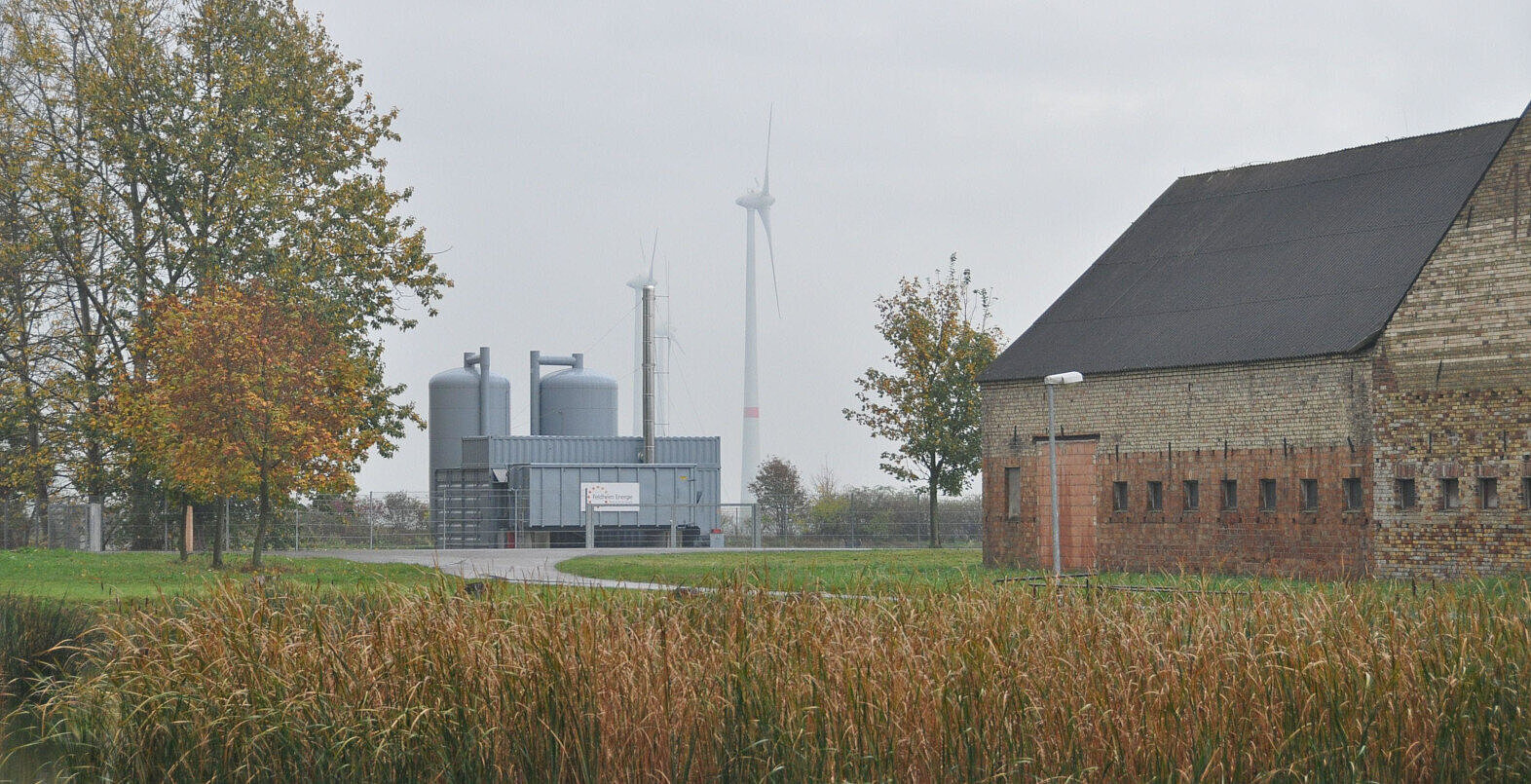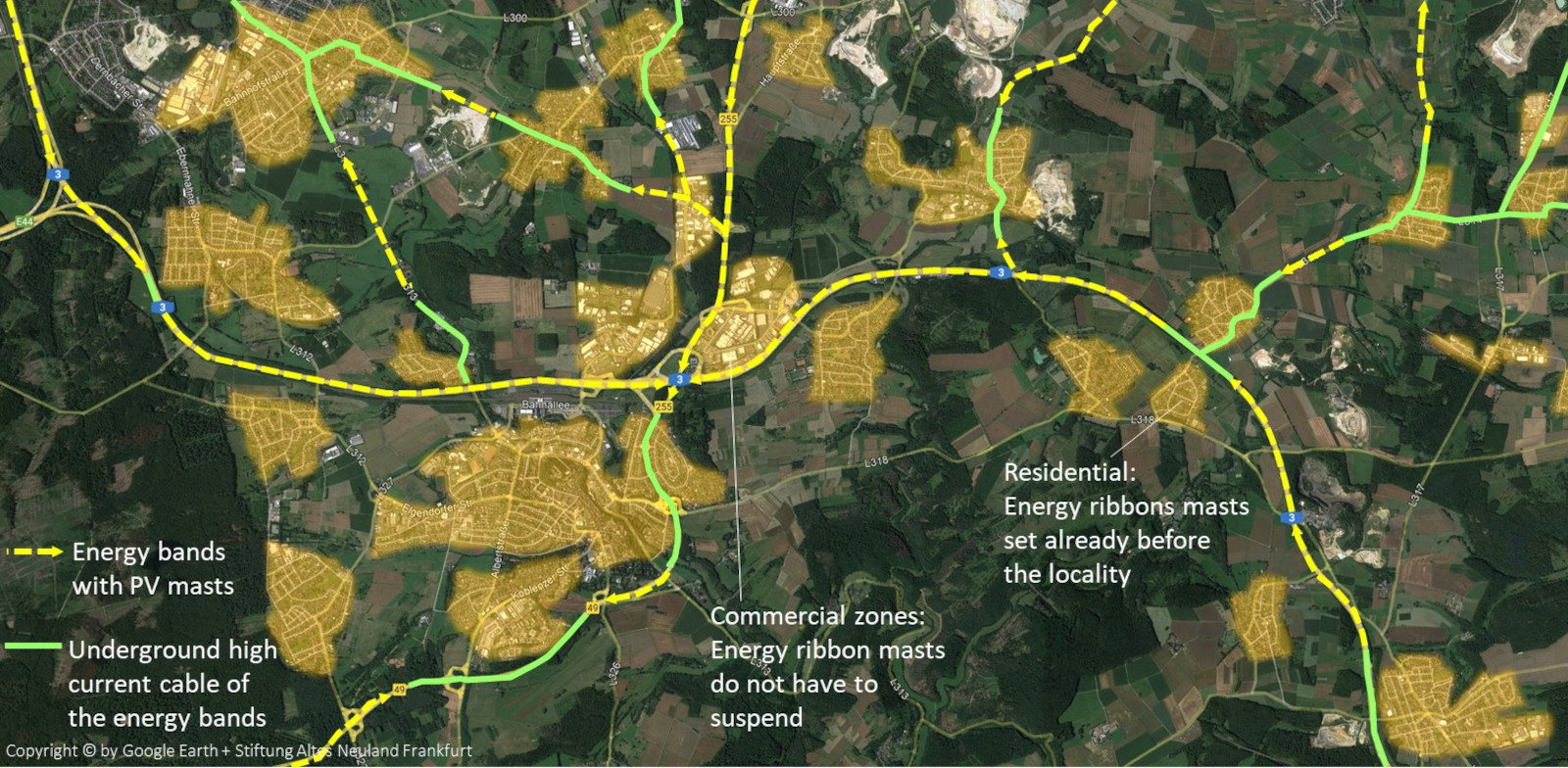Energy Bands to supply communities
Every municipality in Germany can use the highways in its catchment area to produce electricity for itself or have it produced by providers with the help of Energy Bands.
Especially in coordination with neighboring communities, Energy-Band networks can be created, with the help of which the surpluses of volatile energy can be balanced out by connecting the most diverse consumer groups to the network.
Within the villages or towns, there are no poles for Energy Bands, but only underground high-voltage cables to which decentralized power generators such as building owners with large PV-covered flat roofs etc. can connect: to have their energy collected and forwarded - to other consumers or storage locations.







